Why Choose Glass Bottle Packaging for Your Food and Beverage Products?
04-15-2025
Discover the compelling advantages of using glass bottle packaging for your food packaging and beverage needs. This article explores why glass jars and bottles are a superior packaging choice, covering benefits like product food quality preservation, sustainable practices through recycling, and enhanced brand appeal. Whether you're a procurement officer like Mark Thompson seeking reliable glass suppliers or a brand owner prioritizing quality and food safety, you'll find valuable insights here. Learn about the glass bottle manufacturing process, the importance of certifications, and why choosing glass packaging is a smart move for your business and the environment. Reading this will help you understand the full scope of benefits of glass and make informed decisions about your packaging solutions.
Why is Glass Packaging Considered Premium in the Packaging Industry?
In the vast world of the packaging industry, glass packaging consistently stands out as a premium choice. Why? It boils down to a unique combination of factors that appeal to both businesses and consumers. From my experience as Allen, running a factory with 7 production lines here in China, exporting primarily to discerning markets like the USA and Europe, I've seen firsthand why companies choose glass. The inherent qualities of glass – its transparency, its solid feel, its inert nature – all contribute to a perception of higher value. When a customer sees a product housed in a glass container, there's often an immediate association with quality, purity, and care. Think about high-end cosmetics, gourmet foods, or premium beverages; glass is frequently the packaging material of choice.
Furthermore, the appearance of glass offers a clean, elegant canvas for branding. Unlike some other packaging options, glass doesn't easily scratch or lose its luster, maintaining a premium look from the shelf to the consumer's home. This durability also translates to better product protection. For businesses like Mark Thompson's, who supply glass containers to manufacturers, this perceived value is a significant selling point. It allows their clients, the product manufacturers, to command higher prices and build a stronger brand image. The packaging itself becomes part of the product's appeal, signaling to the consumer that what's inside is worth protecting and presenting beautifully. This intrinsic quality perception is a major driver behind the preference for glass packaging in many sectors.
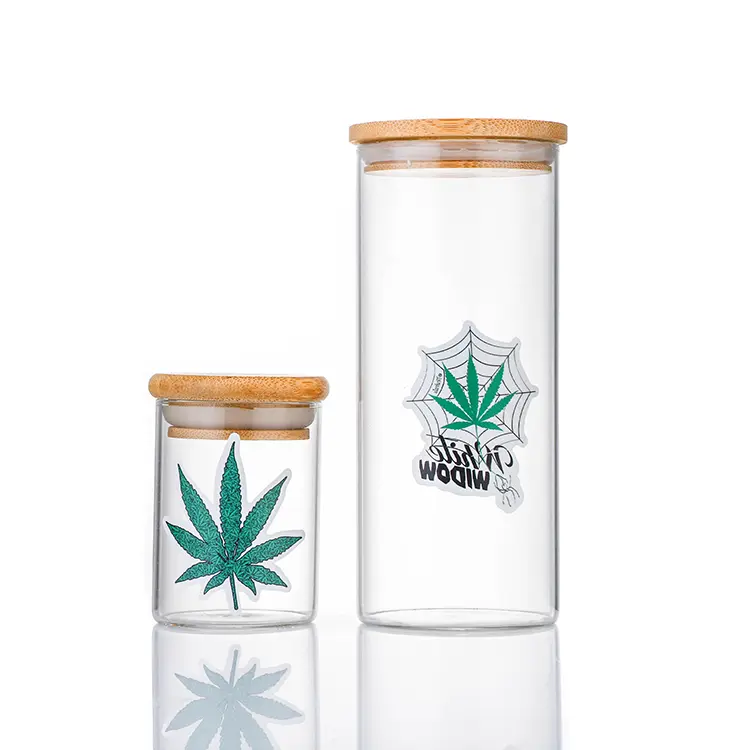
What are the Primary Advantages of Glass for Food and Beverage Packaging?
When it comes to food packaging and beverage packaging, the advantages of glass are numerous and significant. As a manufacturer, I constantly emphasize these points to clients like Mark. Firstly, glass is impermeable and non-porous. This is crucial because it means there's no risk of chemical leaching from the packaging into the contents, nor can external contaminants seep in. This ensures the freshness of food and beverages, preserving the original taste, aroma, and nutritional value exactly as intended. Unlike plastic containers, glass doesn't interact with the product inside, making it the ideal packaging choice for sensitive items.
Secondly, the transparency of glass is a major plus. Consumers appreciate being able to see the product they are buying. This visual appeal builds trust and confidence in the food quality. Think about jams, pickles, sauces, or colourful juices – glass jars and bottles showcase these products beautifully. While coloured glass (like amber or green) is used to protect contents from UV light, clear glass remains incredibly popular for its honesty. Finally, glass packaging offers exceptional barrier properties against moisture and oxygen, further extending shelf life and maintaining product integrity. These core advantages of glass make it a reliable and preferred packaging option for a wide range of products.
How Does Glass Packaging Ensure Food Quality and Safety?
Food safety is paramount, and this is where glass packaging truly excels. Its inert nature is the cornerstone of its safety profile. Glass is made primarily from sand (soda ash, limestone, and silica), all-natural, stable materials. This means glass doesn't react chemically with the food products it holds. You don't have to worry about BPAs, phthalates, or other potentially harmful chemicals migrating from the container into the food or beverage, a concern sometimes associated with other packaging types. This purity protection is a significant reason why health-conscious consumers and brands dedicated to natural or organic products often choose glass.
Moreover, the integrity of glass containers contributes significantly to food quality preservation. Glass provides an excellent seal when paired with appropriate closures (like metal lids or corks), preventing spoilage from air, moisture, or microorganisms. This airtight environment maintains the freshness, flavour, and texture of the contents for longer periods. Glass jars and bottles can also withstand high temperatures, making them suitable for processes like pasteurization and sterilization (hot-filling), which are essential for ensuring the safety of many food and beverage products. As a supplier, ensuring our glass jars and bottles meet stringent food safety standards, like FDA compliance, is non-negotiable, especially when serving clients like Mark who supply to the US market. Glass ensures that food remains safe and tastes as it should.
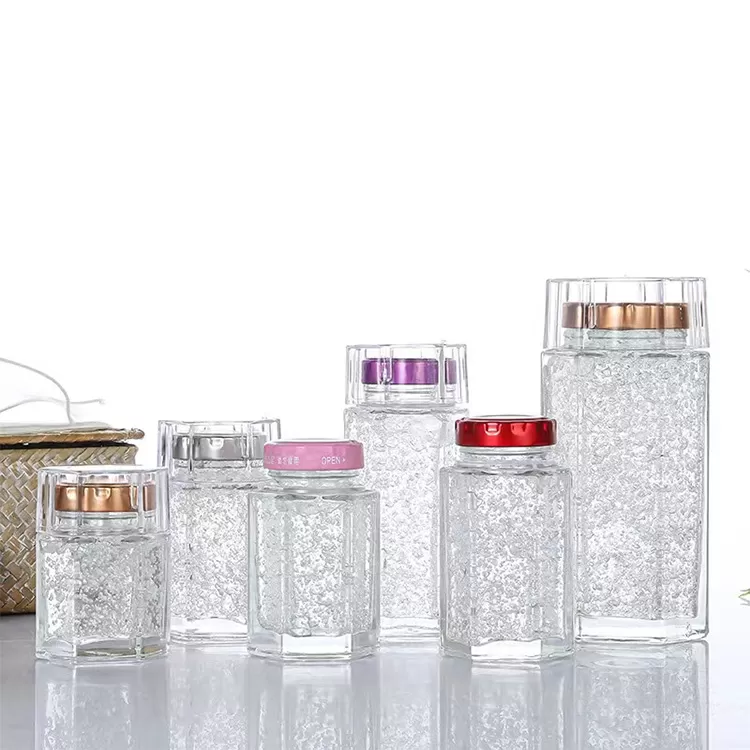
Is Glass Bottle Packaging Truly Sustainable? Let's Talk Recycling.
Sustainability is a huge topic in the packaging world, and rightly so. So, is glass bottle packaging a genuinely sustainable choice? The answer is a resounding yes, primarily due to its infinite recyclability. Glass is the only packaging material that can be recycled endlessly without losing its quality or purity. When glass is collected and sent for recycling, it's crushed into cullet, melted down, and reformed into new glass bottles and jars. This process uses significantly less energy and raw materials compared to making glass from scratch. Using recycled cullet reduces the need for mining virgin materials like sand and soda ash, lessening the environmental impact.
The recycling glass infrastructure is well-established in many countries, including our main export markets like the USA, Europe, and Australia. High recycling rates mean that a significant portion of manufactured glass finds its way back into the production loop, creating a closed-loop system. This circularity helps reduce waste dramatically compared to single-use packaging. For businesses concerned about their environmental footprint, choosing glass packaging is a clear statement of commitment to sustainability. While the weight of glass can impact transportation emissions, the long-term benefits of its recyclability make it a strong sustainable packaging choice. We, as manufacturers, play our part by incorporating recycled content whenever feasible and ensuring our production of glass methods are energy-efficient. The ability to recycle glass indefinitely makes it a standout sustainable option.
What Does the Glass Bottle Manufacturing Process Involve?
Understanding the glass bottle manufacturing process helps appreciate the quality and consistency we strive for. As a factory owner, overseeing our 7 production lines is my daily focus. The process begins with raw materials: silica sand (the main component), soda ash (to lower the melting point), and limestone (for durability). Recycled cullet is often added to this mix to save energy and resources. These materials are meticulously measured and mixed before being fed into a furnace.
Inside the furnace, the mixture is heated to extremely high temperatures (around 1500°C or 2700°F) until it becomes molten glass, often referred to as liquid glass. This molten glass is then carefully conditioned to ensure uniform temperature and viscosity before being fed into forming machines. The most common methods for creating glass bottles and jars are the 'Press-and-Blow' process (often used for wide-mouth jars) and the 'Blow-and-Blow' process (typical for narrow-neck bottles). In essence, a precise amount of molten glass (a 'gob') is formed into a preliminary shape (a parison) and then blown into its final shape within a mold. After forming, the containers travel through an annealing lehr, a temperature-controlled tunnel that slowly cools the glass. This critical step relieves internal stresses, preventing the glass container from shattering easily – it enhances the durability of glass. Finally, rigorous quality inspections check for defects, dimensions (glass thickness, capacity), and strength before the packaging is prepared for shipment. This meticulous glass bottle manufacturing ensures we deliver high-quality glass bottles and jars are ideal for our clients' needs.
Can Glass Jars and Bottles Be Customized for Branding?
Absolutely! Customization is one of the key strengths of glass packaging, and it's something we specialize in at our factory. While standard shapes and sizes are readily available, glass offers fantastic flexibility for creating unique product packaging that truly reflects a brand's identity. This is crucial for standing out on crowded shelves. Customization can range from subtle modifications to completely bespoke designs.
Here are some common customization options for glass jars and bottles:
- Shape & Size: Beyond standard rounds and squares, we can create unique silhouettes – hexagonal, oval, embossed patterns, specific heights, and capacities tailored to the product. Check out our 150ml Round&Square Kinler Weed Glass Jar for an example of shape variety.
- Color: While clear, amber, and green are standard, glass can be produced in a wide spectrum of colours through tinting the molten glass itself (flint vs. colored glass) or through secondary coating processes.
- Embossing/Debossing: Logos, brand names, or decorative patterns can be directly molded into the glass surface, adding a tactile and premium feel.
- Finishes: Techniques like frosting (acid etching or sandblasting), spraying (for matte or opaque looks), and ceramic printing allow for diverse surface treatments and branding applications.
- Closures: The neck finish can be customized (e.g., screw thread, crimp neck, cork mouth) to accommodate specific caps, droppers, or pumps, completing the desired aesthetic and functionality.
For clients like Mark Thompson, offering customizable packaging solutions is essential. It allows his customers, the brand owners, to differentiate their products effectively. We work closely with clients through the design and molding stages to ensure the final glass container meets their exact specifications for both aesthetics and performance. This ability of glass to be molded and finished in diverse ways makes it incredibly versatile for branding.
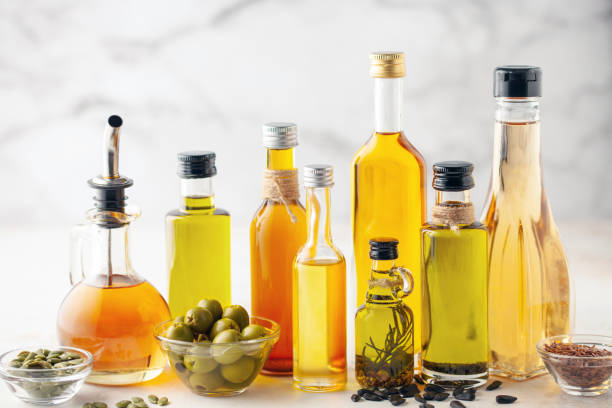
What Types of Food and Beverage Products Benefit Most from Glass Packaging?
While glass packaging is versatile, certain types of food and beverage products particularly benefit from its unique properties. Its inertness and barrier qualities make it ideal for products where preserving flavour purity and extending shelf life are critical.
Here's a breakdown:
- Acidic Foods: Products like pickles, tomato sauces, salsas, and fruit preserves often have high acidity. Glass doesn't react with acids, ensuring the taste remains untainted and the packaging doesn't degrade. Our 730ml Glass Pickles Storage Jar with Metal Lid is a perfect container for these items.
- Dairy Products: Milk, yogurt, and creams benefit from the excellent barrier properties of glass, which protect against oxygen and light (especially with coloured glass) that can degrade quality and taste. Glass jars like our 100ml Pot Yogurt Milk Podding Glass Jar are commonly used for food like yogurt.
- Premium Beverages: High-quality juices, craft beers, wines, spirits, and kombucha are often packaged in glass bottles. This preserves complex flavour profiles and conveys a premium image. The impermeability ensures carbonation is maintained in sparkling beverages.
- Oils and Vinegars: Glass protects sensitive oils from oxidation and light degradation (amber or green glass is often preferred), preserving their flavour and nutritional value.
- Baby Food: Due to heightened concerns about chemical leaching, glass jars are a preferred choice for baby food, ensuring purity and safety.
- Honey and Jams: The transparency of glass showcases the natural beauty of honey and jams, while its seal protects their quality. Hexagonal jars are particularly popular for honey.
- Cannabis Products: For products like edibles, flowers, or oils, glass jars offer an airtight seal, preserve freshness and potency, prevent odour escape, and provide a premium look. Child-resistant features can also be incorporated. Our range includes specific Brown 50g Sealed Glass Marijuana Jars designed for this market.
Essentially, any product where taste integrity, shelf stability, food safety, and premium presentation are priorities is well-suited for glass packaging. The material for food needs careful consideration, and glass often comes out on top.
How to Choose the Best Glass Packaging Supplier? (Addressing Mark's Concerns)
Choosing the right glass packaging supplier is critical, especially for someone like Mark Thompson who operates as an intermediary, relying on consistent quality and service. Based on my experience dealing with international buyers, here are key factors to consider, addressing common pain points:
- Quality & Consistency: This is paramount. Look for suppliers with robust quality control systems integrated throughout the glass bottle manufacturing process. Ask about their inspection procedures (both automated and manual) and defect tolerance levels. Request samples to assess the high-quality glass, clarity, glass thickness, and finish firsthand. Consistent quality avoids issues down the line for Mark's clients. Our factory prides itself on Type III glass (standard soda-lime glass used for most food/beverage containers) quality and consistency across large orders.
- Certifications & Compliance: Never compromise on this. Ensure the supplier can provide valid, verifiable certifications relevant to your market and product (e.g., FDA for the USA, EC 1935/2004 for Europe). Mark's concern about certificate fraud is valid; verify certificates independently if possible. Reputable suppliers will be transparent about their compliance standards for food-safe glass.
- Communication & Responsiveness: Inefficient communication is a major pain point. Choose a supplier with dedicated, English-speaking sales and support staff who understand your needs and respond promptly. Clear, consistent communication prevents misunderstandings about specifications, timelines, and logistics. As Allen, I ensure my team is trained to communicate effectively with clients like Mark, providing regular updates.
- Manufacturing Capabilities & Capacity: Assess if the supplier's capacity (like our 7 production lines) can handle your volume requirements and potential growth. Understand their lead times for both standard and custom orders. Ask about their experience with customization and mold development if needed.
- Logistics & Reliability: Shipment delays can disrupt product launches. Discuss logistics options, shipping terms (FOB, CIF, etc.), and estimated transit times. Inquire about their track record for on-time delivery and how they handle potential delays. A reliable packaging supplier understands the importance of timely delivery.
- Pricing & Payment Terms: While Mark seeks competitive pricing, quality shouldn't be sacrificed. Obtain detailed quotes that clearly outline all costs. Discuss payment terms upfront – ensure they are secure and acceptable (e.g., Letter of Credit, T/T).
Finding suppliers via exhibitions allows for face-to-face interaction, building trust. Google searches are useful but require thorough vetting using the criteria above. Partnering with a reliable glass factory directly, like ours, can often streamline communication and ensure better oversight compared to dealing with trading companies. Taking these factors into account when choosing your packaging supplier minimizes risks and builds a strong foundation for a long-term partnership.
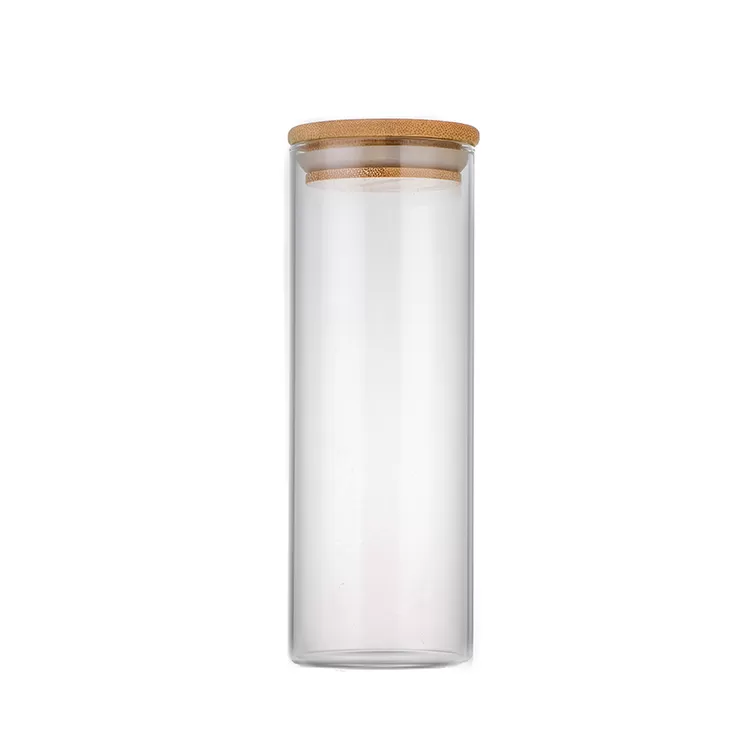
What Certifications Matter When Sourcing Glass Containers?
Navigating certifications is crucial when sourcing glass containers, particularly for food packaging, beverages, cosmetics, and pharmaceuticals. Ensuring your supplier holds the right, valid certifications protects your business, your clients, and end-consumers. Here are some key certifications and standards to look for, especially relevant for markets like the USA and Europe:
- FDA Compliance (U.S. Food and Drug Administration): Essential for any packaging material intended for contact with food, beverages, drugs, or cosmetics sold in the USA. This ensures the glass used is considered GRAS (Generally Recognized As Safe) and doesn't leach harmful substances. Look for specific compliance statements regarding FDA 21 CFR regulations.
- EC 1935/2004 (European Union): This is the framework regulation in the EU for materials and articles intended to come into contact with food. It requires that materials do not transfer their constituents to food in quantities large enough to endanger human health, change the composition of the food, or deteriorate its taste and odour. Suppliers should provide a Declaration of Compliance (DoC).
- ISO Standards (International Organization for Standardization):
- ISO 9001: Certifies that the supplier has a robust quality management system in place, ensuring consistency in processes and products.
- ISO 14001: Demonstrates commitment to environmental management, relevant for sustainable sourcing.
- ISO 22000: Specifies requirements for a food safety management system, critical for food packaging suppliers.
- Good Manufacturing Practice (GMP): While often associated with the products inside the packaging, GMP principles applied to packaging manufacturing ensure hygiene, traceability, and control over the production environment, minimizing contamination risks.
- Heavy Metals Testing (e.g., TPCH/CONEG): Certifies that the glass packaging meets regulations limiting the presence of heavy metals like lead, mercury, cadmium, and hexavalent chromium. This is important for environmental safety and consumer health.
- Child-Resistant Packaging (CRP) Standards (e.g., CPSC, ISO 8317): Crucial for specific markets like cannabis or certain pharmaceuticals. Requires specialized testing and certification if the packaging needs to be child-resistant.
Mark's concern about certificate fraud highlights the need for due diligence. Don't just accept a certificate image; ask for verification details or check accredited certification body databases when possible. A reputable supplier will readily provide documentation and be transparent about their compliance. These certifications aren't just paperwork; they are assurances of safety, quality, and responsible manufacturing for every glass bottle and jar.
The Future of Glass Bottle Packaging: Trends and Innovations
The glass packaging industry isn't static; it's constantly evolving to meet new demands for sustainability, functionality, and aesthetics. As manufacturers, we keep a close eye on these trends to ensure we offer cutting-edge packaging solutions.
One major trend is lightweighting. Manufacturers are continually developing techniques to reduce the amount of glass used in each container without compromising strength or performance (glass thickness optimization). This reduces raw material consumption, energy use during glass production, and transportation costs/emissions, enhancing the sustainable profile of glass bottle packaging.
Another key area is enhanced recycling initiatives. This includes improving collection systems, increasing consumer awareness, and investing in advanced sorting technologies to achieve higher recycling rates and ensure cleaner cullet for making glass. There's also growing interest in reusable glass container systems, particularly for local beverage delivery or refill stations, further promoting circularity and helping to reduce waste.
Innovation in design and decoration continues. Digital printing on glass, unique texturing, and interactive packaging elements (like QR codes integrated into the design) offer new branding possibilities. For specific markets like pharmaceuticals and cannabis, advancements focus on improved tamper-evidence, precise dosing features (like dropper bottles), and sophisticated child-resistant closures integrated seamlessly with the glass container. We're also seeing more use of premium glass types, like borosilicate glass (known for its thermal shock resistance and chemical durability), expanding beyond labware into high-end food storage and beverage packaging. The future of glass packaging looks bright, driven by its inherent quality and ongoing innovation focused on sustainability and enhanced functionality. Glass stands the test of time, adapting to modern needs.
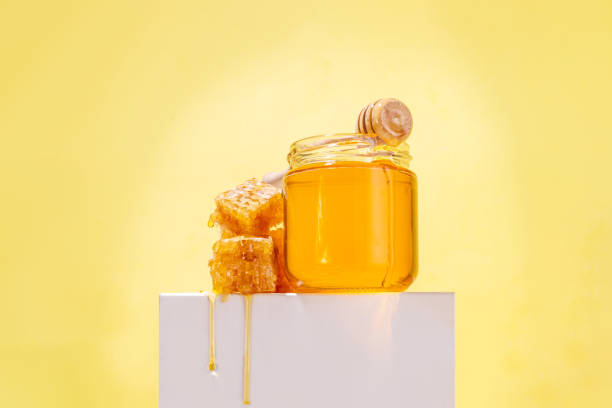
Key Takeaways: Why Choose Glass Bottle Packaging?
Here’s a quick summary of the main points discussed:
- Premium Perception: Glass packaging conveys quality, purity, and value, enhancing brand image for various food products and beverages.
- Superior Protection: Glass is impermeable and inert, ensuring food safety by preventing chemical leaching and protecting contents from external elements, preserving food quality, taste, and freshness.
- Sustainability Champion: Glass is 100% and infinitely recyclable without losing its quality, making it a leading sustainable packaging choice that helps reduce waste. Recycling glass saves energy and resources.
- Versatility & Aesthetics: Glass containers offer excellent transparency to showcase products and can be customized in countless shapes, sizes, colors, and finishes for strong branding.
- Safety Assured: Suitable for processes like pasteurization due to heat resistance, glass is a trusted material for food and beverages. Proper certifications (FDA, ISO, etc.) are crucial when sourcing.
- Manufacturing Excellence: The glass bottle manufacturing process, involving melting raw materials (soda ash, sand, limestone) and precise forming/annealing, results in durable and reliable containers.
- Ideal Applications: Particularly beneficial for acidic foods, dairy, premium beverages, oils, baby food, honey, jams, and cannabis products where purity and shelf life are key. Jars are available for many types of food.
- Supplier Selection: Choosing the right supplier involves verifying quality, certifications, communication, capacity, and reliability to avoid common pitfalls like delays or quality issues. Reliable packaging starts with a reliable partner.
- Future Focused: The packaging industry sees ongoing innovation in lightweighting, enhanced glass recycling, reusable systems, and advanced designs, ensuring glass remains a relevant and sustainable option.
Considering these benefits of choosing glass, it's clear why glass bottle packaging remains a preferred choice for businesses aiming for quality, safety, sustainability, and premium branding in their product packaging.








